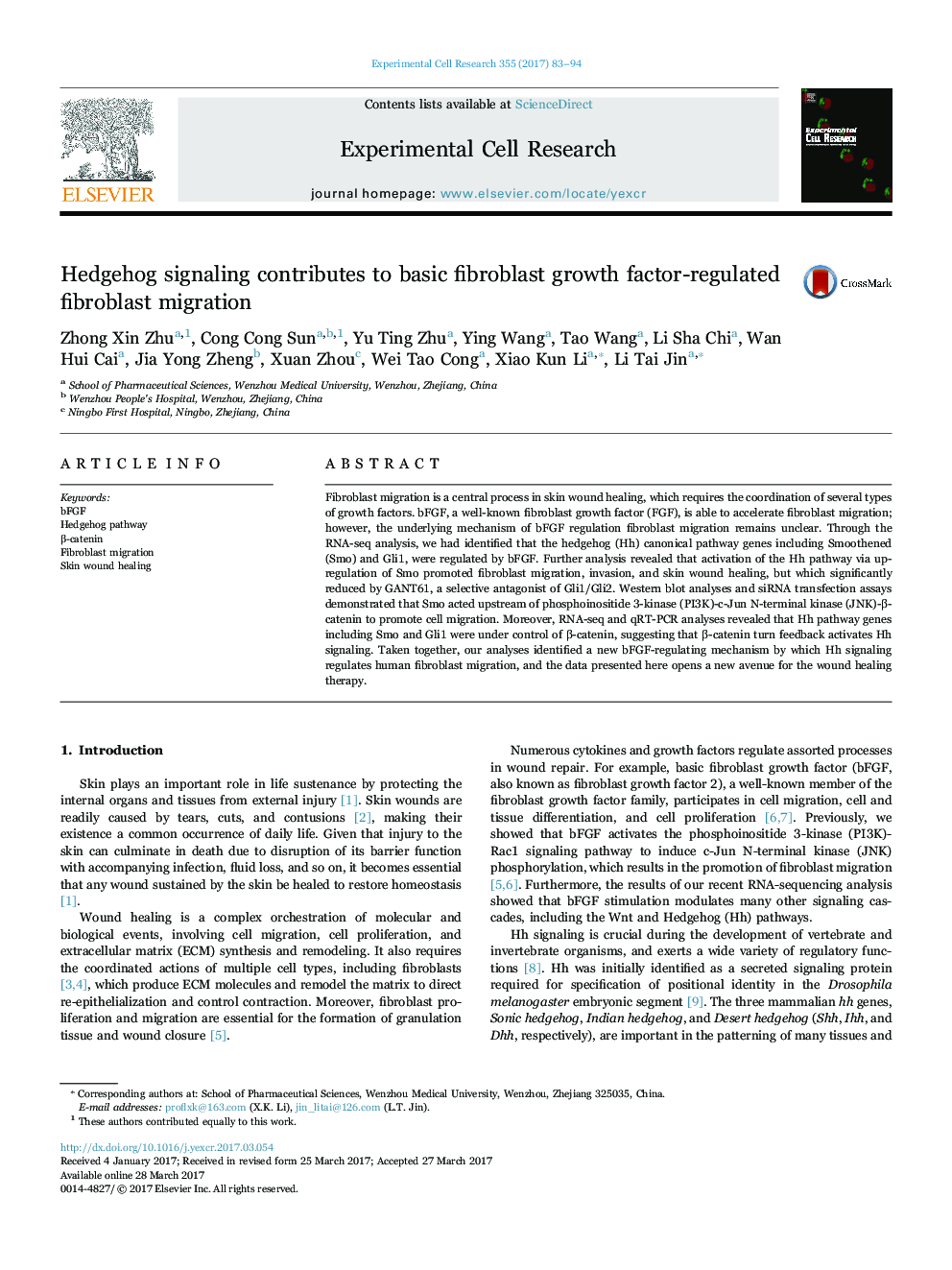| Article ID | Journal | Published Year | Pages | File Type |
|---|---|---|---|---|
| 5527188 | Experimental Cell Research | 2017 | 12 Pages |
â¢bFGF regulates Hedgehog (Hh) signaling in fibroblasts.â¢The Smo and Gli two master regulators of Hh signaling positively regulate fibroblast migration.â¢Smo facilitates β-catenin nuclear translocation via activation PI3K/JNK/GSK3β.â¢Î²-catenin positively regulates fibroblast cell migration and the expression of Hh signaling genes including Smo and Gli.
Fibroblast migration is a central process in skin wound healing, which requires the coordination of several types of growth factors. bFGF, a well-known fibroblast growth factor (FGF), is able to accelerate fibroblast migration; however, the underlying mechanism of bFGF regulation fibroblast migration remains unclear. Through the RNA-seq analysis, we had identified that the hedgehog (Hh) canonical pathway genes including Smoothened (Smo) and Gli1, were regulated by bFGF. Further analysis revealed that activation of the Hh pathway via up-regulation of Smo promoted fibroblast migration, invasion, and skin wound healing, but which significantly reduced by GANT61, a selective antagonist of Gli1/Gli2. Western blot analyses and siRNA transfection assays demonstrated that Smo acted upstream of phosphoinositide 3-kinase (PI3K)-c-Jun N-terminal kinase (JNK)-β-catenin to promote cell migration. Moreover, RNA-seq and qRT-PCR analyses revealed that Hh pathway genes including Smo and Gli1 were under control of β-catenin, suggesting that β-catenin turn feedback activates Hh signaling. Taken together, our analyses identified a new bFGF-regulating mechanism by which Hh signaling regulates human fibroblast migration, and the data presented here opens a new avenue for the wound healing therapy.
